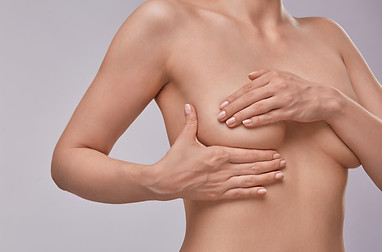
Secreção mamilar
Esta é a sua página de serviços. É uma ótima oportunidade para fornecer informações sobre os serviços que você presta. Clique duas vezes na caixa de texto para começar a editar seu conteúdo e certifique-se de adicionar todos os detalhes relevantes que deseja compartilhar com os visitantes do site.

Nipple Discharge due to Malignant breast conditions
There are certain features of nipple discharge which need to be determined to further identify its cause and subsequent treatment plan. Nipple discharge can be:
-
Spontaneous (nipple discharge occurring without squeezing/pressure on the nipple)
-
Upon expression (nipple discharge occurring when the nipple is squeezed or pressured), this is generally not related to underlying breast disease
-
Unilateral (from one breast) or bilateral (occurring in both breasts)
-
Single duct (discharge from a single duct/spot on the nipple) or multi duct (discharge occurring from several nipple ducts or spots)
-
Yellow/green or milky due to benign, normal physiological discharge
-
Blood stained/red/brown or clear as water- this type of nipple discharge may be related to underlying breast conditions such as benign or malignant disease
Physiological (normal) Nipple discharge
This discharge is usually yellow, milky, or green in appearance, and it does not generally happen spontaneously. It can often be seen to be coming from more than one duct and sometimes from both breasts. Physiological nipple discharge is no cause for concern.
Milky nipple discharge (either spontaneous or on expression) is also generally normal (physiological).
Pathological (abnormal) Nipple Discharge
This type of nipple discharge is abnormal. It is generally spontaneous and unrelated to pregnancy or breastfeeding. In most cases, it has a non-cancerous (benign) cause. Spontaneous nipple discharge that is caused by disease (pathology) in the breast is more likely to be from one breast only (unilateral), confined to a single duct, and clear or blood-stained in appearance.
Nipple discharge that is associated with a breast lump or changes in breast shape should undergo clinical examination, breast imaging and possible biopsy.
Breast cancer
About 5-10% of women with nipple discharge may have an underlying breast cancer (invasive carcinoma or in-situ early malignancy) Therefore, all unilateral, single duct, spontaneous nipple discharge that is clear or blood-stained should be investigated further.
Paget’s Disease of the Nipple
Paget’s disease is a particular type of breast cancer which involves the nipple. Paget’s disease typically causes ulceration and erosion of the nipple skin, and it may be associated with blood-stained nipple discharge.
Treatment
Physiological or normal nipple discharge does not require treatment. It is important to stop expressing, or squeezing the nipple and breast, as this may cause more fluid to come out.
Pathological or abnormal nipple discharge is often clear or blood-stained, persistent, spontaneous and generally single duct origin. This needs to be investigated by your doctor with a clinical examination, breast imaging +/- biopsy. A surgeon may need to see you after biopsy.
When is surgery needed for nipple discharge?
There are two types of surgery for nipple discharge: microdochectomy or total duct excision (see breast surgery).
Surgery is generally performed for certain breast papilloma, and malignant breast conditions. Surgery may also be required for blood-stained nipple discharge even if the tests show no abnormality.
